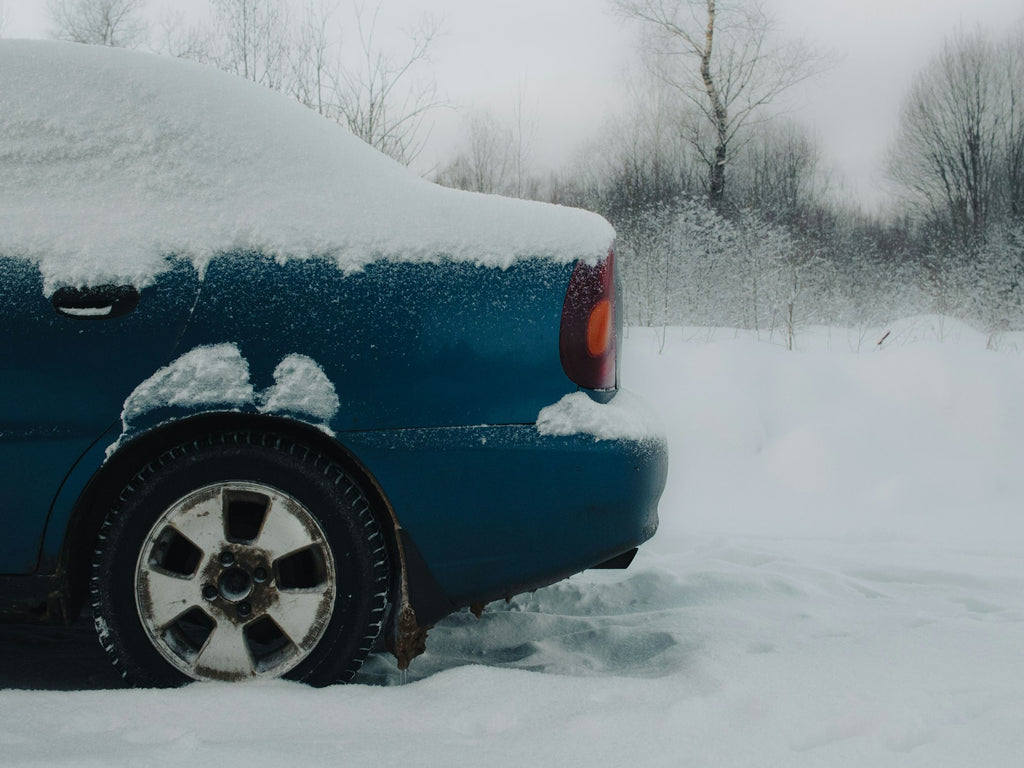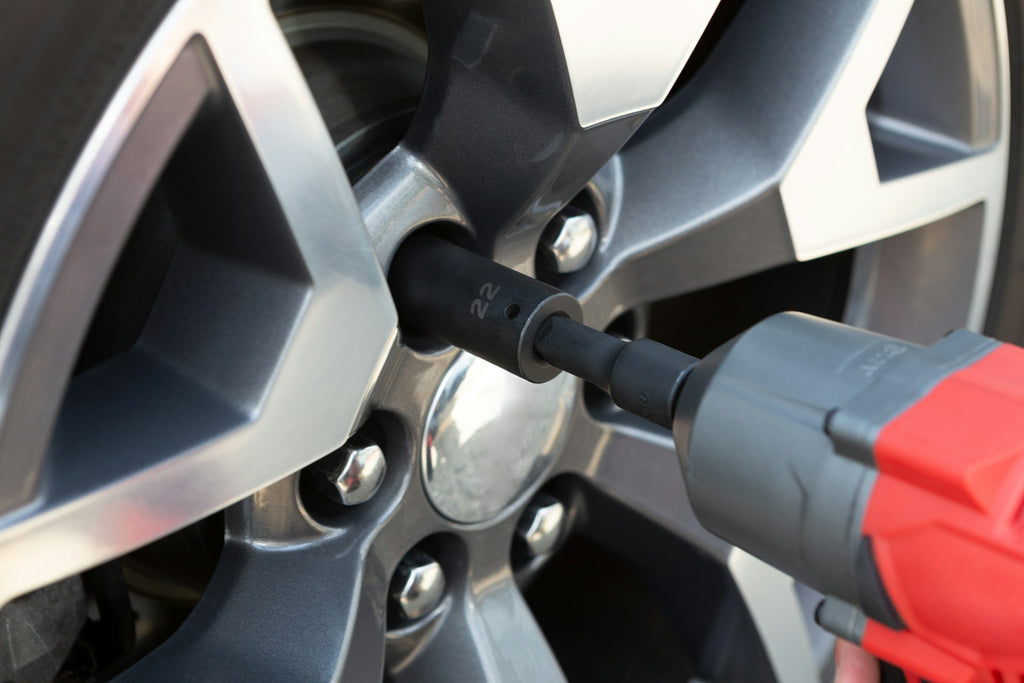Your vehicle's tires are the only point of contact with the road. As such, proper tire maintenance is absolutely crucial when it comes to safe handling, braking, accelerating, and protecting yourself and your passengers.
The seasons can wreak havoc on your tires if you're not vigilant. With temperature playing such an integral role in tire pressure, cars require seasonal tire adjustments.
What is PSI and Why Does it Matter for Tires?
Tire pressure is measured in PSI, which stands for "pounds per square inch." This refers to the amount of air pressure inside the tire pressing outward on every square inch of the interior surface.
How Do Outside Temperatures Affect Tire PSI?
When outside temperatures change, the air inside your tires shrinks or expands. For example, a 50°F temperature swing between a hot summer and cold winter will typically alter your tire pressure by 6-8 PSI.
Colder weather causes the most rapid tire pressure drops:
- Tires can lose 1-2 PSI per week when temperatures remain below freezing
- A 40° drop can decrease PSI by up to 10 pounds
The opposite occurs in hot weather, with tires slowly gaining pressure over time as the trapped air expands.

Why Does Tire Pressure Fluctuate So Much?
Besides outdoor temperature swings, normal driving raises tire temperatures by about 20°F in the first couple of miles. This increases pressure by 2 PSI until cooling off.
Slow air leaks also become more noticeable with extreme heat and cold. The most common causes are:
- Tiny punctures that seep air
- Age deterioration of rubber allows permeation
- Loose or damaged valve stem cores
More information here: Why Should Every Car Owner Consider Investing in a Tire Inflator.
What Risks Does Incorrect Tire Pressure Pose?
Driving with underinflated or overinflated tires is extremely hazardous and should not be taken lightly. It jeopardizes:
- Braking Distances- Deflated tires require longer stops. More tread touches the pavement, increasing friction and drag on the road. Your brakes have to work harder to slow against the added resistance. An extra 40 feet or more of braking distance could mean the difference between a close call and a collision.
- Traction & Control - Tires rely on consistent contact and grip. Too much or too little pressure causes uneven wear, reducing the tread's ability to channel water away. This decreases available traction for accelerating, cornering, and evasive maneuvers. A loss of control increases the chances of spinning out, hydroplaning, or rollovers.
- Blowouts- Underinflated tires build up excessive heat from overworking the rubber to compensate for reduced rigidity. They grow even more vulnerable to road hazards. Combine high speeds, scorching pavement, and low pressure for a recipe for sudden air loss and blowouts.
- Bad Weather Crashes- Inflation outside the safe zone significantly cuts wet and snowy conditions performance. Tires lose the ability to channel water and mud away from the tread's grip area. Traction plummets on packed snow or icy layers. Adequate tread-to-road contact and pressure keep you on the straight and narrow.
Insufficient inflation also causes premature uneven tread wear, reducing usable tire life by 25-30% easily. Plus, every 1 PSI drop hurts fuel economy by 0.2 to 0.3 MPG from engine strain.
Maintaining recommended pressure could be the difference between arriving safely or careening into danger. Respect your tires and they'll carry you securely wherever you roam.

Get Ahead of the Cold: Winter Tire Preparation
As temperatures drop, prioritize inspecting your tires thoroughly before winter weather hits. This ensures you get the jump on cold-induced air contraction and shrinking tread depth when pavement grip matters most.
Adjust Air Pressure Relative to Average Seasonal Temps
The Department of Energy created pressure increase guidelines for impending cold snaps:
- Increase PSI 1 pound for every 10°F average temp decrease
- Between 30-60°F, add 3-4 extra PSI as a buffer
- Below freezing, tack on up to 5 additional PSI
For example, tires set to 32 PSI in 60°F weather should run 35-36 PSI if expecting an average winter temp of 30°F.
Use your door sticker specs as the PSI baseline for adjustment. Re-check and tweak monthly as cold fronts blow through. Invest in a high-quality digital pressure gauge for precision.
Managing Tires Through Winter's Challenges
Frigid temperatures and icy conditions create sizable hazards for your tires beyond just air pressure loss. Expect these additional winter tire tribulations:
1. Rapid PSI Drops in Extreme Cold
Tires can lose up to 1-2 PSI per week when temps remain below freezing for extended periods. Use a quality digital gauge to track weekly.
2. Compromised Traction on Snow and Ice
Packed powder, icy layers and freezing rain dramatically cut available grip. Ensure adequate tread depth above 4/32 inches. Rotate to snow tires for maximum traction.
3. Accelerated Tread Wear
Frequent fluctuation between cold, wet and dry pavement accelerates tread wear by exposing more rubber to the road over the same distances. Watch for feathering and cupping.
4. Corrosion Damage
Salt, sand and gravel speed up wheel corrosion. Mud and slush hide potholes. Inspect frequently for embedded debris and sidewall damage.
Check pressures at least twice monthly during winter. Inspect tires closely for cuts, bubbles, cracks and abnormal wear patterns. Rotate every 5,000 miles to distribute wear across the tread face. Address issues immediately to maintain safety and control on slippery roads. Staying vigilant against winter hazards keeps you rolling through the icy months ahead.
Transitioning Tires from Winter to Summer
As temperatures rise in spring, prep your tires for summer performance. Start by thoroughly inspecting them nose to tread after harsh winter months.
Check for:
- Irregular or uneven tread wear
- Flat spots from lengthy parking
- Sidewall cracks, punctures, bubbles
- Embedded debris and salt corrosion
Address any damage or concerning wear patterns before rotating back to summer tires. This ensures you start the season with quality rubber.
Gradually Increase Air Pressure
Incrementally boost inflation 1-2 PSI at a time every few days as ambient warmth returns. The goal is slowly acclimating the trapped air to avoid a rapid expansion.
Most vehicles see pressures rise 6-8 PSI from winter to summer. Track with a gauge and stop when you reach the door sticker PSI.
Summer Tire Care Tips
Summer heat brings its own tire care challenges from sustained high temperatures and extensive highway travel. Monitor tire inflation diligently during hot months.
1. Signs of Overheating
Watch for signs of overheating like:
- Visible ozone cracks in the sidewall rubber
- Tread chunking from expanded air bubbles
- Increased air permeation through expanded rubber
Park in the shade or use tire covers when leaving your car sits for long periods in sun and heat. The scorching interior temperatures accelerate damage. Limit high speed, aggressive cornering and hard braking which overheats tires as well.
2. The Effects of Heavy Loads
The combination of higher inflation, more passengers and luggage raises tire temperatures exponentially on summer road trips. Account for extra load by increasing cold pressure 2-3 PSI above door sticker levels before departing and when refueling if the tires look low.
Proper inflation ensures safe tires through extreme heat and heavy use, while getting you to your destinations without issue. Don't let your guard down on tire care just because sunny skies prevail.

Additional Seasonal Tire Factors
A few supplementary seasonal tire care considerations include:
1. Regional Temperature Variations
Continental climates see extreme cold and heat swings compared to moderate coastal regions. The greater the flux, the more dramatic impact on tire inflation and performance. Monitor diligently.
High-altitude locations also expand trapped air volume from lower atmospheric pressure. Tailor inflation to the conditions you drive in.
2. Proper Tire Storage Between Seasons
Drivers alternating between summer and winter wheels must store the unused set properly to maintain longevity and functionality.
Best practices include:
- Mount tires on rims before storing to avoid flat spots
- Clean tread and sidewalls thoroughly
- Keep inflated to mid-range vehicle PSI
- Place away from temperature extremes
- Use tire bags to avoid light damage
- Stow vertically on racks to prevent distortion
- Consider climate-controlled storage
Proactively adjusting care routines based on seasonal tire factors ensures you get the most miles and performance regardless of driving conditions.
Helpful Tools and Tips for Tire Care
Consistency remains the key to effective seasonal tire maintenance. Follow these best practices for keeping your tires in peak condition all year long:
1. Invest in an Accurate Pressure Gauge
A quality dial or digital gauge provides precise inflation measurements compared to imprecise stick types. Digital models make registering exact PSI simple. Tests gauges annually for calibration.
2. Check Tires When Cool, Before Driving
Always measure cold tire pressure before operating the vehicle. Driving heats up the tires and yields falsely high readings. Cool tires offer the most accurate pressures.
3. Stick to a Routine Inspection Schedule
Mark your calendar to check inflation at least monthly, as well as before and after long trips, towing heavy loads or when cargo weight changes dramatically. Staying on schedule prevents inflation fluctuations from getting out of hand between vehicle usages.
4. Document Pressure Readings
Keep a dedicated log of PSI readings by date and conditions to recognize patterns and operate within optimal inflation ranges seasonally. Many newer vehicle monitors show live tire pressures.
5. Understand the Signs of Underinflation
Detect low pressures from uneven tread wear, reduced responsiveness, compromised handling, wheel rim damage, etc. Address immediately and diagnose the cause.
Keep Rolling Through Every Season
As the only link to the road, tires require vigilant care across seasons. Check inflation routinely when cool. Note pressure loss patterns. Address uneven wear and damage promptly. Compensate for heavy loads. Store tires are inflated and covered. Follow best practices for safety and savings.
While adjusting your tire's PSI, using the correct equipment is key for both effectiveness and convenience. It's essential to know when to use an air compressor versus a tire inflator. Although they may seem similar, each serves a unique purpose in maintaining tire health and pressure.
Interested in diving deeper into this subject? Fanttik offers an insightful guide on the key differences between air compressors and tire inflators, which can help you make an informed decision for your tire maintenance needs. Learn more about these crucial tools by reading their comprehensive article here.
Read More
- Car Vacuum Cleaner: Guide to Choosing the Best Solution(2023)
- How Often Should You Vacuum Your Car? Keep It Spotless & Fresh!
- NASCAR Xfinity Driver Kyle's Choice: Fanttik Signature Series Automoti
- Is the car price dropping now in the USA?
- Fanttik Partners with Brooklyn Nets as Official Partner for DIY Tools




































Leave a comment
All comments are moderated before being published.
This site is protected by hCaptcha and the hCaptcha Privacy Policy and Terms of Service apply.